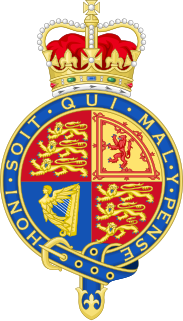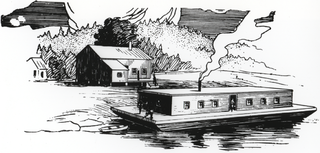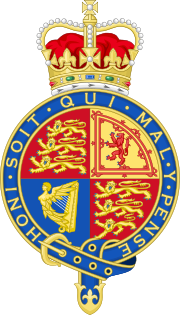An Order-in-Council is a type of legislation in many countries, especially the Commonwealth realms. In the United Kingdom this legislation is formally made in the name of the monarch by and with the advice and consent of the Privy Council (King-in-Council), but in other countries the terminology may vary. The term should not be confused with Order of Council, which is made in the name of the Council without royal assent.

A statutory instrument (SI) is the principal form in which delegated legislation is made in Great Britain.

The War Measures Act was a statute of the Parliament of Canada that provided for the declaration of war, invasion, or insurrection, and the types of emergency measures that could thereby be taken. The Act was brought into force three times in Canadian history: during the First World War, Second World War, and the 1970 October Crisis.

Canadian nationality law details the conditions in which a person is a national of Canada. With few exceptions, almost all individuals born in the country are automatically citizens at birth. Foreign nationals may naturalize after living in Canada for at least three years while holding permanent residence and showing proficiency in the English or French language. As Commonwealth citizens, Canadian citizens have favoured status when residing in the United Kingdom; those living in the U.K. are eligible to vote and serve in public office or non-reserved government positions.
Pith and substance is a legal doctrine in Canadian constitutional interpretation used to determine under which head of power a given piece of legislation falls. The doctrine is primarily used when a law is challenged on the basis that one level of government has encroached upon the exclusive jurisdiction of another level of government.

Ultra vires is a Latin phrase used in law to describe an act which requires legal authority but is done without it. Its opposite, an act done under proper authority, is intra vires. Acts that are intra vires may equivalently be termed "valid", and those that are ultra vires termed "invalid".

Reference Re Validity of Section 5(a) of the Dairy Industry Act (1949), also known as the Margarine Reference or as Canadian Federation of Agriculture v Quebec (AG), is a leading ruling of the Supreme Court of Canada, upheld on appeal to the Judicial Committee of the Privy Council, on determining if a law is within the authority of the Parliament of Canada's powers relating to criminal law. In this particular case, the Court found that a regulation made by Parliament was ultra vires. Though the regulation contained sufficient punitive sanctions, the subject matter contained within it was not the kind that served a public purpose.

British Columbia v Imperial Tobacco Canada Ltd, [2005] 2 S.C.R. 473, 2005 SCC 49, is a decision of the Supreme Court of Canada where the Court found that the provincial Tobacco Damages and Health Care Costs Recovery Act, which allowed the government to sue tobacco companies, was constitutionally valid. Imperial Tobacco Canada is an indirect subsidiary of British American Tobacco.

Re Board of Commerce Act 1919 and the Combines and Fair Prices Act 1919, commonly known as the Board of Commerce case, is a Canadian constitutional decision of the Judicial Committee of the Privy Council in which the "emergency doctrine" under the federal power of peace, order and good government was first created.

Fort Frances Pulp and Paper v Manitoba Free Press is a famous decision on the Canadian Constitution by the Judicial Committee of the Privy Council on the "emergency doctrine" of the peace, order and good government power in the British North America Act, 1867.

Multiple Access Ltd v McCutcheon is a leading constitutional decision of the Supreme Court of Canada on the resolution of overlapping federal and provincial laws under the doctrine of double aspect.

The history of Canadian nationality law dates back over three centuries, and has evolved considerably over that time.

Canadian immigration and refugee law concerns the area of law related to the admission of foreign nationals into Canada, their rights and responsibilities once admitted, and the conditions of their removal. The primary law on these matters is in the Immigration and Refugee Protection Act, whose goals include economic growth, family reunification, and compliance with humanitarian treaties.

The United Nations Act 1946 is an Act of the Parliament of the United Kingdom which enables Her Majesty's Government to implement resolutions under Article 41 of the United Nations Charter as Orders in Council. Thus Parliament delegated the power to enact such resolutions without the approval of Parliament. However, the prospective Order must be laid before either Parliament or the Scottish Parliament. A similar mechanism was later used in the European Communities Act 1972 and the Terrorist Asset-Freezing etc. Act 2010.

The Terrorist Asset-Freezing Act 2010 is an Act of the United Kingdom Parliament that was in force from 10 February 2010 until its repeal on 17 December that same year by the Terrorist Asset-Freezing etc. Act 2010.

Canada (AG) v British Columbia (AG), also known as the Reference as to constitutional validity of certain sections of The Fisheries Act, 1914 and the Fish Canneries Reference, is a significant decision of the Judicial Committee of the Privy Council in determining the boundaries of federal and provincial jurisdiction in Canada. It is also significant, in that it represented a major victory in the fight against discrimination aimed at Japanese Canadians, which was especially prevalent in British Columbia in the early part of the 20th century.

Winner v SMT (Eastern) Ltd is the last case of the Judicial Committee of the Privy Council that affected Canadian constitutional jurisprudence. The Supreme Court of Canada case, from which it arose, is also notable for summarizing the essence of Canadian citizenship.

HM Treasury v Ahmed [2010] UKSC 2 is a UK constitutional law and human rights case concerning the United Nations Act 1946 and the powers it grants to the executive to issue terrorism control orders.

Quebec (AG) v Canada (AG), 2015 SCC 14 is a Canadian constitutional law case concerning the federal government's ability to destroy information related to the Canadian long-gun registry pursuant to the federal criminal law power.
The administrator of the Government of Canada is the title used by the individual performing the duties of Governor General of Canada – the federal viceregal representative – while the office is vacant or its incumbent is otherwise unable to perform his or her duties. The office is defined in the Letters Patent, 1947, which created the office of Governor General in its present-day role. Should it be necessary to fill the position, the chief justice of Canada may act as the administrator, followed by the puisne justices in order of seniority should the chief justice not be able to assume the role. Accordingly, the role is a temporary one meant to serve only during a vacancy in the governor general's office, and is not a title that is consistently held by the chief justice at all times.









